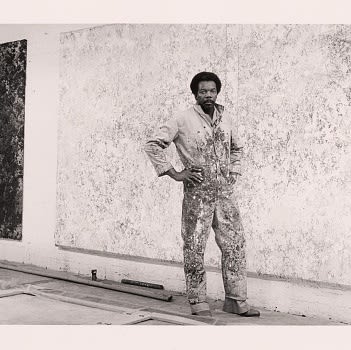“I am a better artist today in that I am obviously a better teacher. Whether I am teaching or making art, the process is fundamentally the same: I am creating.”
-Sam Gilliam
Career
In the 1960s, as the political and social front of America began to explode in all directions, Gilliam began to take bold declarative initiatives by creating imagery inspired by the African-American experience. This was at a time when "abstract art was said to be irrelevant to black African life." Gilliam's early style developed from brooding figural abstractions into large color-stained canvases suspended from the walls and ceilings. In 1971, in support of the Black Emergency Cultural Coalition, he boycotted an event at the Whitney Museum to protest against the museum for failing to consult with black art experts when planning the show, Contemporary Black Artists in America. In 1972, Gilliam represented the US at the Venice Biennale, the first African-American artist to do so. In 2017, he exhibited at the Venice Biennale once again, in the Giardini's central pavilion.
Around 1965, Gilliam became the first painter to introduce the idea of the unsupported canvas. He was inspired to do this by observing laundry hanging outside his Washington studio. His drape paintings were suspended from ceilings or arranged on walls or floors, representing a sculptural third dimension. Gilliam's draped canvases change depending on the environment and are frequently embellished with metal, rocks, and wooden beams. In 1975, Gilliam veered away from the draped canvases, and became influenced by jazz musicians such as Miles Davis and John Coltrane. He started producing dynamic geometric collages, which he called "Black Paintings" because they are painted in shades of black. In the 1980s Gilliam's style changed dramatically once more, transitioning to quilted paintings reminiscent of African patchwork quilts from his childhood.
